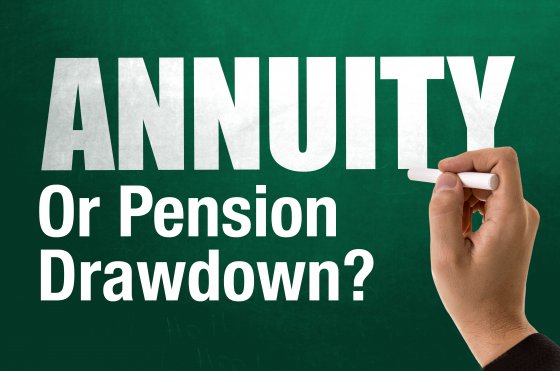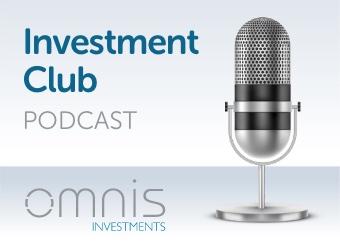
Is purchasing a Pension Annuity better than using Pension Drawdown?
Thursday 1 February, 2018
Tracy Dove, pension adviser, recommends getting pension advice at retirement
Our financial advisers recommend you get pension advice when you get to retirement as the decisions you make at retirement often cannot be reversed.
Thomas Oliver’s Financial Adviser and Financial Planner, Tracy Dove reviews different types of pension and your pension options at retirement.
What is a Defined Benefit Pension Scheme?
Pensioners with a guaranteed income have a Final Salary Pension Scheme or Defined Benefit (DB) scheme). They have the benefit of a pension pot which generates an income for the rest of their lives. The amount received is based on your final salary and how long you worked for your employer. The onus is on your previous employer/current employer to make sure they have the provisions in place to pay you this income for the rest of your life when you reach the company retirement age.
What is a Defined Contribution Pension Scheme?
Many Defined Benefit Pension Schemes have been phased out in the UK so individuals who might have historically been entitled to a Defined Benefit Pension Scheme now qualify for a Defined Contribution Pension Scheme or ‘Money Purchase’ Pension Scheme. In this scheme the employer and the employee both save over the long-term to build a retirement pot which can be used to pay an income when the individual reaches retirement. Sadly unlike a DB pension plan the onus is completely on the individual to save, as opposed to the employer, so it is similar to having a private pension plan in place.
What options are in place if you have a Defined Contribution Pension Scheme (DC) at retirement?
What is Pension Drawdown?
Pension Drawdown is one of the most flexible retirement options available, but it is also more complex and generally higher risk than a Pension Annuity, so understanding the pros and cons of how drawdown versus annuities works is important.
How does Pension Drawdown work and what are the benefits of using it?
Pension Drawdown works simply by enabling you to draw an income from your retirement savings every year, making sure you don’t run out of money. There are many ways you can keep things simple. For example you could only drawdown the annual growth of the plan. Usually in a low/medium risk portfolio this income would be the equivalent of around 5% per year. By doing this you would preserve the capital value. The benefit here is that the plan owner has complete control over their capital, so they decide what level of income they require each year. In addition in the event that the individual who owns this plan dies generally the value of the plan can be passed to their beneficiaries tax-free.
How does a Pension Annuity work and what are the benefits of using it?
An alternative to Pension Drawdown is purchasing a Pension Annuity. If you have a Defined Contribution Pension Scheme (DC) you can approach a life and pensions provider and ask them how much income they will pay you for life in exchange for a large part of your pension savings. You would then purchase a guaranteed income each year. The advantage of purchasing an annuity is having the security of knowing how much pension income you will receive.
Pension Planning Case Study
Sam reached 65 years of age with a private (Defined Contribution) pension plan valued at £700,000. Sam decided to purchase a Pension Annuity with his capital which paid him £40,000 per annum for the rest of his live.
Sam was in good health and he and his wife planned on having an active lifestyle, travelling. His wife Christine, who was much younger at 55 years of age didn’t work and had limited pension plans in place. Sadly Sam passed away only 2 years after he retired and purchased his Pension Annuity.
In the Case Study Sam assumed he would have a long retirement, and he and Christine would save some of his pension income each year. He discounted the option of a lower income, in exchange for giving Christine half the income in the event he passed away as he thought it wasn’t necessary. Sam had planned to use this extra income and set this aside in savings. He assumed he would live to an age when Christine received her inheritance from her elderly parents. Sam made the ultimate decision to take the full annuity income, no proper financial advice was taken as Sam believed it was too expensive.
Christine tried to argue her case when Sam passed however she had no recourse as her husband made the decision which ultimately was very costly.
Tracy Dove, Financial Adviser and Retirement Planner in London said:
‘The case study of Sam and Christine is a good example of how costly pension mistakes in retirement can be. Choosing the wrong pension option could leave loved ones with limited pension income. Sadly when you reach retirement you will not have the earning capacity to reverse your mistakes, so it is very important to make sure the retirement decisions you make are the right ones for your financial situation. I strongly recommend anyone coming up to retirement who wants to understand the differences between their defined benefit pension schemes or defined contribution schemes contact a financial adviser. We can explain how all pension schemes work and then recommend if you should consider taking a tax free lump sum, use pension income drawdown or set up a pension annuity depending on your own personal financial circumstances and your retirement goals. It is really important that you research all your pension options and understand current pension legislation as it changes frequently.’





